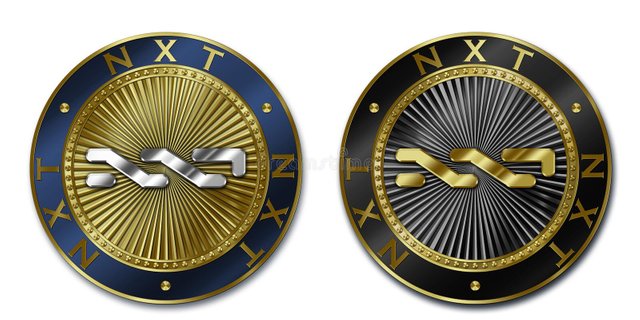Steemit Crypto Academy Season 4 Beginners' Course Homework Post For Task 6 : Title: Different Types Of Consensus Mechanisms Submitted By @churchangel Date: 14:11:21

Question 1: What is the difference between PoW and PoS?
Advantages and Disadvantages?
Which one is better in scaling capacity?
Examples?
In order for us to fully appreciate these consensus processes, despite the fact that both PoW and PoS are consensus methods, I will have to spend some time outlining the differences between the two.
An agreement must be reached by more than half of the nodes in a system that covered a consensus mechanism. That means that no one makes decisions alone, unlike a centralized system where all decisions are made by a single authority like a corporation. In the blockchain, a consensus process is in place to ensure the security, transparency, and free flow of activity. Another issue worth noting is that we have several distinct sorts of consensus mechanisms at our disposal.
They include;
POB
DPoS
POWe.t.c
For the sake of this assignment, I will just be concerned with the Pos and PoW.
Proof of Work
In this form of consensus procedure, the mining of blocks is employed as a proof of work (PoW) mechanism to establish consensus. To demonstrate their efforts, miners are required to submit documentation. A hash function must be used to solve mathematical puzzles for miners to be able to mine a block. When a miner successfully mines a block, the miner is rewarded and a new block is added to the blockchain, completing the transaction.
Additionally, by providing computers and electricity, they act as watchdogs, preventing hackers from infiltrating the system and causing damage. In addition to validating the transaction and minimizing double spending, this strategy is utilized to reduce fraud. To recap, Bitcoin is a well-known digital currency that makes use of the Proof-of-Work (PoW) system, which stands for Proof of Work.
Proof of Stake

Image source
In fact, the Proof of Stake(PoS) consensus model is centralized, and Bitcoin was the first cryptocurrency to implement a complete and thorough Proof of Stake consensus model. Proof of Stake(PoS) is a system that allows users or machines to function well in a parallel way, and it determines who verifies the next block based on the amount or amount of coins the individual holds, rather than miners using computers to check transactions as they do in the case of the usual or regular Proof of Work.
Answer 1: The differences between Proof of Work and Proof of Stake are as follows:
For the time being, we'll use a categorized approach to classifying PoW and PoS.
•This is why it is important to understand the difference between PoW and PoS. In PoW, the likelihood of mining is determined by the amount of work done by the miner; in PoS, the likelihood of verifying a new block is determined by the number of coins an individual owns; and in both cases, it is important to understand this difference.
•To what end does the cryptographic or Proof of Work puzzle in PoW have to be solved? In PoW, the first miner who solves the cryptographic or Proof of Work challenge for each block is awarded a reward.
•If a miner produces the winning number in a cryptographic puzzle, they win a lottery, whereas a validator in a proof-of-stake (PoS) system is not given a block reward but rather a network fee as his reward, and in this case, a validator is someone who is charged with confirming blockchain transactions to determine whether they are legal and accurate.
•Miners must solve complex problems with the aid of their computers in order to alter or control data in Proof of Work, while the block creator is picked by an algorithm that takes into account the token or incentive received by the user.
•In Proof of Work (PoW), it is essential for hackers to have 51 percent of computing power in order to connect or join a fake block, but in Proof of Stake (PoS), it would be necessary for hackers to have 51 percent of all digital money on the network, which is practically impossible.
•For both energy efficiency and cost, Proof of Work systems are quite inefficient, but Proof of Stake systems are far more efficient.
When it comes to PoW, specialized hardware is required, although standard server-grade equipment is adequate for PoS.
•It is the initial investment made in tokens or coins in PoS that increases one's position on the network that is different from PoW, where the first investment is in hardware.
•Bitcoin, for example, is a digital currency that uses a Proof-of-Work mechanism or a consensus-building algorithm that employs the most widely used and popular SHA256 Proof-of-Work function, while other cryptocurrencies such as Tezos, Cardano, Cosmos, and others use various types of Proof-of-Stake consensus mechanisms.
Answer 2: The Advantages Of Proof Of Work (PoW)
•PoW's primary virtue is that it pays its miners with block rewards and other incentives, such as a percentage of their mining expenses or fees, for using this consensus process.
•Additionally, this protocol creates a decentralized network, which is the primary or primary foundation of Cryptocurrency operations.
•Using Proof of Work (PoW), which is both difficult to implement and prohibitively expensive to attack, the blockchain is kept very intricate or tough to attack.
The Disadvantages Of PoW
•The Proof of Work results in a significant increase in energy consumption, which hurts the environment and the user.
•Even as freshly created digital currencies continue to participate in the crypto market, the Proof of Work results in a long-term dependency on mining operations.
The Advantages Of The Proof of Stake (PoS) Concept
•For example, Proof of Stake does not require a large amount of computing power and is more energy-efficient than Proof of Work (POW).
•In addition, miners that employ their coins in the Proof of Stake system are rewarded with wonderful perks and awards.
•No risk is associated with Proof of Stake when it comes to providing future security for miners to enable them to earn recompense in the case of any fraudulent online activities like hacking and criminal activity on the internet in general.
Disadvantages Of Proof of Stake(PoS)
Proof of Stake attempts to undermine the core of the cryptocurrency system by raising the basis for a decentralized network.
Users' investments might be harmed by low-quality assaults since the PoS is centralized and less secure.
Answer 3
Considering that the Proof of Work (PoW) has a limited scaling capacity, I would draw the conclusion from my study that the Proof of Stake (PoS) is superior in scaling capacity to the Proof of Work (PoW).
Answer 4
The following are two examples of PoS, and they are Ethereum and NXT coins. Let's consider them one after the other.
Ethereum

Image Source
While it is true that the Proof of Stake concept is more difficult to grasp than the Proof of Work concept in terms of reaching a consensus across a network, Ethereum can be considered to be one of the major cryptocurrencies that are solidly founded on the Proof of Stake concept, given the amount of effort that has been put into the development of Ethereum, particularly since the inception of their phase 2 upgrade. For example, Ethereum users are needed to spend 32 Eths to be allowed to validate transactions since they are arbitrarily picked, as well as verify and manage blocks that are under their control, on the Ethereum blockchain.
NXT COIN
A more impressive demonstration of the Proof of Stake(PoS) method. A forging procedure duplicates their blocks, which are created on average every 1 minute by accounts that are established by computers that support the network and replicated by the network.
A representation of this coin is seen in the following image:

Image source
In this system, cyber attackers are prevented from creating new chains from the first block because of the system's security measures.
Cc: @sapwood
#club5050 😀